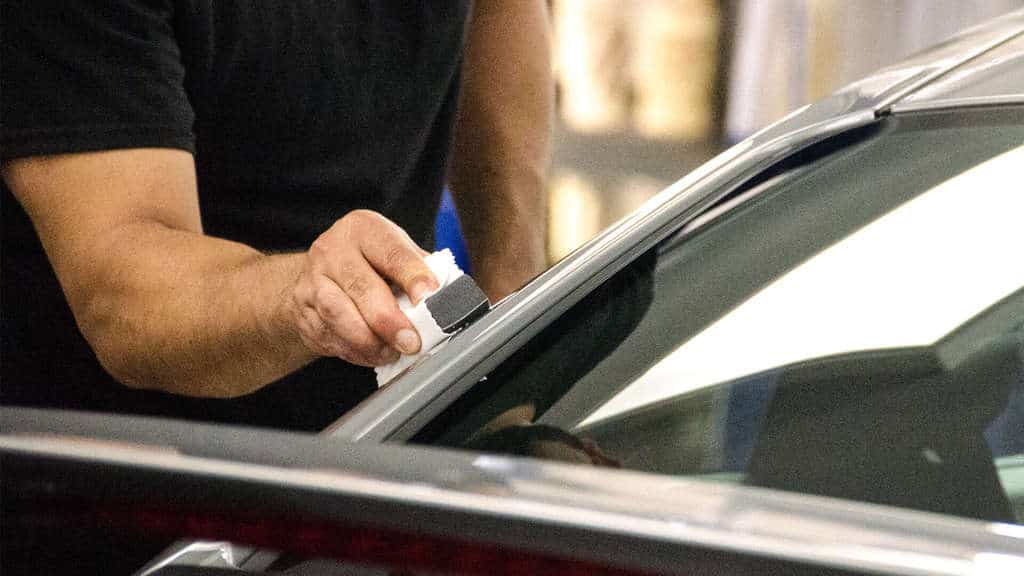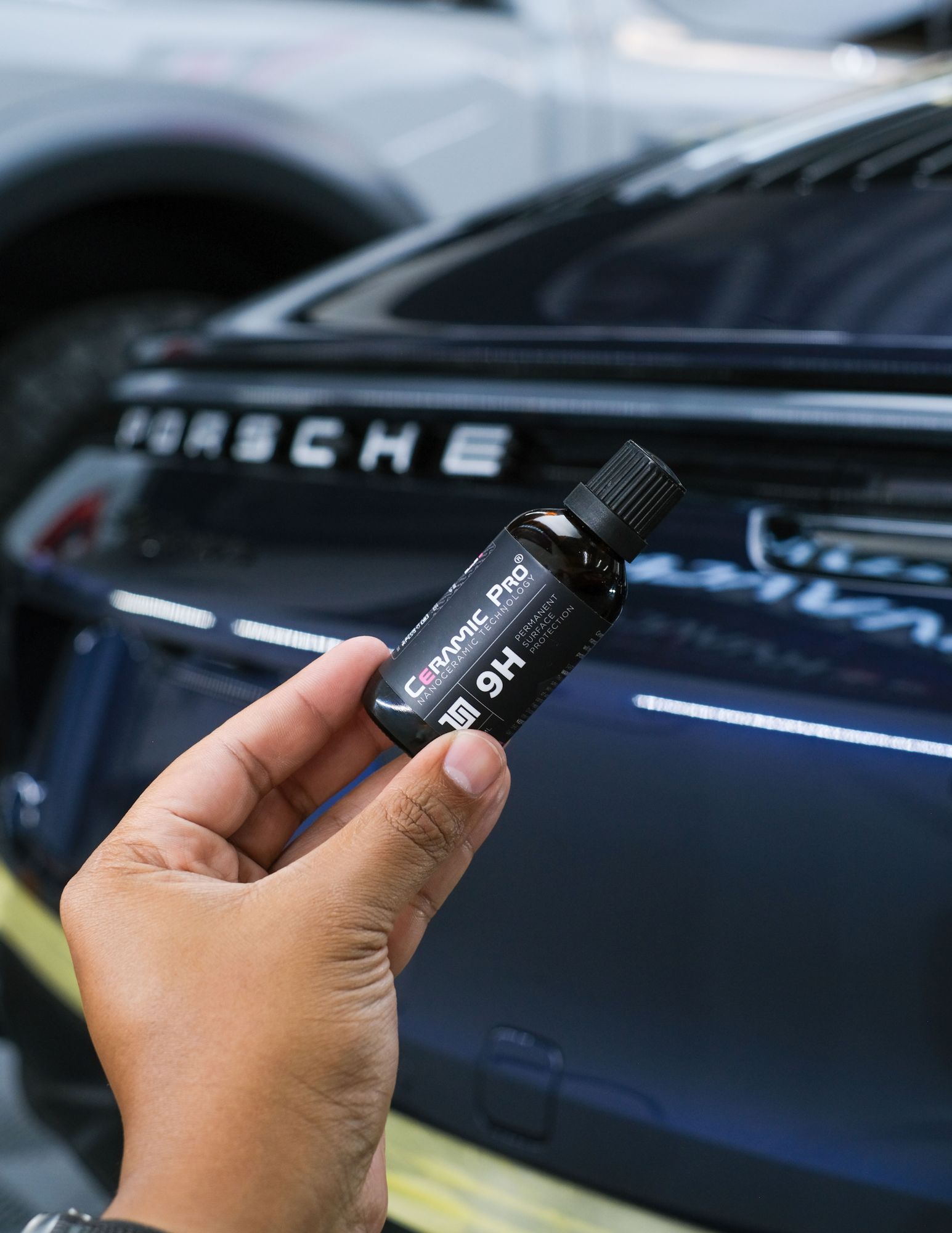Ceramic Coating: The Future of Automotive Surface Protection
Ceramic Coating: The Future of Automotive Surface Protection
Blog Article
Ceramic Finishing vs. Conventional Wax: Which Supplies Much Better Long-Term Defense?
The dispute in between ceramic finishes and typical wax for vehicle defense has gathered considerable focus amongst automobile lovers and experts alike. While both satisfy of guarding paint, their differences in resilience, application, and long-lasting maintenance prices may influence a consumer's option. Ceramic coatings boast superior longevity and resistance to ecological factors, yet the intricacy of their application raises inquiries concerning ease of access and functionality. As we discover these contrasting options, it comes to be important to consider not just the instant advantages however likewise the implications for car care over time.
Summary of Ceramic Coating
Ceramic coating has actually acquired substantial popularity among vehicle enthusiasts and detailers alike as a result of its sophisticated safety top qualities. This innovative modern technology is designed to develop a resilient, hydrophobic guard over a car's paint surface area, significantly improving its resistance to ecological contaminants such as dust, UV rays, and chemical discolorations. Unlike conventional wax, which gives a short-term layer of security, ceramic finishings bond at a molecular degree with the paint, using lasting longevity-- typically expanding beyond 2 years with appropriate upkeep.
The application process involves meticulous prep work of the vehicle's surface, consisting of cleansing and polishing to make sure optimum adhesion. When used, the covering remedies to develop a robust layer that not just adds depth and gloss to the paint however likewise streamlines upkeep. With its hydrophobic residential properties, ceramic coating enables water and dust to slide off more easily, decreasing the regularity of cleans and minimizing the risk of swirl marks.
Furthermore, ceramic coverings are readily available in various solutions, allowing individuals to choose products tailored to their details needs and preferences. Overall, ceramic covering represents a substantial innovation in paint defense modern technology, supplying superior efficiency contrasted to traditional alternatives.
Overview of Traditional Wax
Commonly pertained to as a staple in automotive care, wax works as a preferred option for those seeking a straightforward method to enhance and protect their car's paint - ceramic coating. Automotive wax normally makes up natural active ingredients, such as carnauba, or artificial compounds, designed to develop a protective layer on the surface area of the paint. This layer not only boosts the automobile's gloss and shine but also gives an obstacle against ecological impurities
The application of wax is normally easy to use, making it accessible for both professionals and DIY enthusiasts. It can be applied by hand or machine, allowing for adaptability in the describing procedure. As soon as used, wax requires a healing period, after which it hardens to form a safety covering. Wax is also known for its capacity to push back water, promoting a beading result that assists in the prevention of water places and corrosion.
However, while wax is efficient for boosting the visual charm of a vehicle, it is very important to keep in mind that the security it supplies may require more regular reapplication contrasted to different products, such as ceramic finishes. In general, conventional wax continues to be a preferred choice for those prioritizing convenience of use and prompt aesthetic enhancement.
Longevity and Long Life Comparison
While both ceramic finishings and standard wax deal safety advantages for automobile paint, their toughness and durability vary dramatically. Traditional wax, normally made from all-natural carnauba or synthetic polymers, normally offers a safety layer that lasts approximately three to 6 months. This reasonably short lifespan necessitates regular visit their website reapplication to maintain optimal security.
In contrast, ceramic finishes are crafted from innovative nanotechnology, forming a covalent bond with the paint surface area. This causes a durable, hydrophobic layer that can sustain for 2 to 5 years, relying on the product and environmental problems. The remarkable sturdiness of ceramic finishes is associated to their chemical structure, which supplies enhanced resistance to scrapes, UV rays, and oxidation.

Protection Versus Ecological Aspects
Securing a lorry's paint from environmental aspects is crucial for maintaining its look and value with time. Autos are continuously revealed to a variety of components, consisting of UV rays, bird droppings, tree sap, acid rainfall, and road crud, every one of which can jeopardize the integrity of the paintwork.
Ceramic finishings give a robust defense against these environmental aggressors. Unlike typical wax, which can weaken swiftly under UV direct exposure, ceramic finishings create a sturdy, hydrophobic layer that resists the unsafe link effects of sunlight and toxic wastes. This sophisticated modern technology produces a chemical bond with the automobile's surface area, offering exceptional security that lasts for several years, even in extreme conditions.
Standard wax, while easier to apply, typically needs regular reapplication and uses limited resistance to impurities and UV rays. With time, it can damage down, leaving the paint at risk to scratches and oxidation. In comparison, ceramic coatings maintain their safety top qualities longer, considerably decreasing the danger of paint damage and making certain that the car keeps its aesthetic appeal. Consequently, ceramic coatings are increasingly recognized as the superior selection for long-lasting security against environmental factors.
Application and Maintenance Differences
The approaches of application and subsequent maintenance for ceramic coverings and typical wax differ dramatically, affecting the total individual experience and performance of each product. Ceramic layers require an even more elaborate application procedure, typically including surface area preparation that includes cleaning, sanitizing, and polishing the lorry. When the surface is prepared, the ceramic covering is used in a regulated atmosphere, typically requiring professional know-how to make certain appropriate treating and bonding to the paint.

While both products boost lorry appearance, the longer-lasting security provided by ceramic coatings may validate their preliminary financial investment, in spite of the even more demanding application process. Conversely, traditional wax remains a prominent option for those looking for an easier, albeit short-term, service.

Conclusion
To conclude, ceramic finishings demonstrate considerable benefits over traditional wax in terms of durability and ecological protection. With a lifespan expanding 2 to 5 years and exceptional resistance to UV rays, dust, and chemical spots, ceramic finishes supply a much more reliable solution for lasting automobile upkeep. Although the application procedure may call for specialist experience, the resulting price financial savings and minimized frequency of reapplication highlight the value of ceramic coverings for those seeking optimum lorry defense.
The debate between ceramic coatings and conventional wax for vehicle security has amassed considerable attention amongst automobile fanatics and experts alike. Unlike standard wax, which provides a short-lived layer of security, ceramic layers bond at a molecular degree with the paint, providing long-lasting longevity-- typically expanding beyond address two years with appropriate maintenance.
While both ceramic finishes and traditional wax deal protective advantages for automotive paint, their longevity and longevity vary significantly. For car lovers looking for long-term security, ceramic layers offer an engaging advantage over standard wax items.
In conclusion, ceramic coatings demonstrate considerable benefits over typical wax in terms of sturdiness and ecological protection.
Report this page